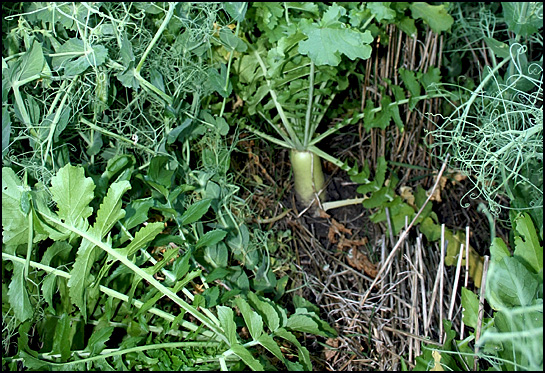
Consider Cover Crops For Fall Grazing
Among no-till grain farmers, cover crops — a second crop planted immediately after harvest — are becoming a popular management practice that enhances cropland soil health. For cattle producers, these cover crops can also be a hot ticket for economical fall grazing.
Bryan Jorgenson of Jorgenson Land and Cattle near Ideal, S.D., has been planting cover crops into harvested wheat fields each August for the past six years. He's planting a cocktail mix of turnips, radishes and lentils on about 650 acres.
He explains, "We are learning the cover crops extend the time there's an active root growing in the soil. Typically after wheat harvest the soil was dormant from August to May and there was nothing to feed the soil microbes. Cover crops create a root environment up until a killing frost, and those cover crops may green up again in the spring before planting. So there's much less time that the soil is dormant."
Above ground that extra forage is proving to be valuable fall feed for the 2,200 head of Angus bulls the Jorgensen's raise for sale and lease.
"It costs about $2.30 per day per bull to feed them, so the ability to graze the cover crops from September through November helps cut our feed cost in half," Jorgenson says. Meanwhile, the bulls are recycling manure nutrients back into the soil and the cover crops are beneficial as food and cover for wildlife, which Jorgenson says are added bonuses.
Near Rutland, N.D., Joe Breker calls the use of cover crops "a wonderful addition" to his operation. He annually plants a mix of cover crops on 500-700 acres after harvest and then allows his commercial Angus-based cow herd to graze the cover crops beginning in early October until "the snow gets too deep." Breker has even pushed his weaning later into the fall so that calves can graze the cover crops with the cows.
Of his cover crops, Breker says, "It's been tremendous to put weight on the cows and calves. It's free grazing — and it's good for the cropland, as well."
For other producers considering adding cover crops, Mitch and Andy Hoenhause of Lisbon, N.D., offer these tips:
- Plant sooner than later. "The sooner you can get cover crops in the better," says Andy. They aim for seeding starting in August and have broadcast cover crop mixes into standing corn and soybeans.
- More variety is better. The Hoenhause brothers have found that the more diversity of seeds in the cover crop mix, the better the benefits to the soil. Aim for a mix containing seeds of warm- or cool-season plants (depending on the time of year), including grasses, legumes and broadleaves, with a variety of rooting depths. Legumes add nitrogen while grasses add organic carbon and recycle phosphorus to legume crops. Radishes and turnips can help loosen the soil and recycle nitrogen, as well.
- Utilize livestock. In cropland areas that are fenced, grazing cover crops with livestock can give some extra economic benefit from the cropland while giving pastures an important period of rest and recovery.











